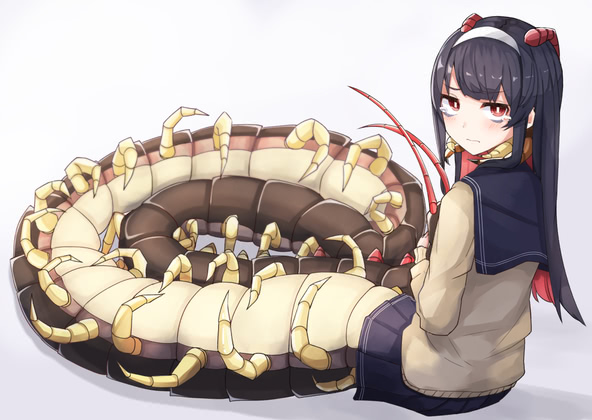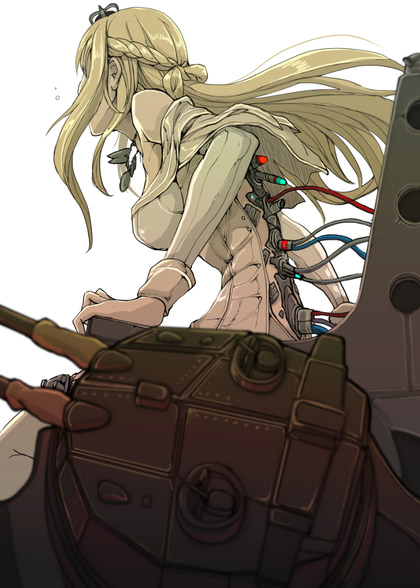Reborn In Another World As A 3D Printer
I’d Rather Summon The Mazoku Musume
Lacking anything else to watch, I made it most of the way through the first season of How Not To Summon A Demon Lord. The main elf girl has ridiculous gag boobs made of pudding while the main catgirl is pure AAA-cup angst, but most of the other females are somewhere in between, which is refreshing after Highschool DxD.
It’s better than those other fan-service comedies I’ve attempted to watch recently, although Our Demon Lord’s social-anxiety freakouts get old fast. It seems to run at the usual light-novel adaptation pace of four episodes per book, which is too fast if the cast is large and there’s any non-trivial world-building. In this case it only feels slightly rushed and sparse, as if the original author hadn’t gotten around to doing those things yet in the first three books.
Note that the original title is a bit more direct: 異世界魔王と召喚少 女の奴隷魔術 = “other world demon lord and summoning-girl slave magic”. Pretty much what it says on the tin, although the Crunchyroll version restricts itself to pokies and not-quite-sexual climaxes. That said, the flatcat girl did take an offscreen finger in the last episode I watched.
Season 2 coming in April.
Cutting the strings
When I switched back from PETG to PLA and tried to print the mini traffic cone that was filled with spiders, I still got some spider-webs. Fortunately, I’ve been keeping my WIP Dremel configs in source control, and determined that I’d inadvertently deleted an important option from my top-level definition file:
"infill_before_walls": { "default_value": false }
The default inherited from fdmprinter.def.json is true, and a cone
is pretty much the worst-case scenario for this, cutting across the
circle from the end position of one layer to the start of the next,
smaller layer. Adding this back eliminated every single bit of
stringing inside the cone.
Tarball
updated. Several times, actually; among other things,
retraction_extra_prime_amount is something that can’t be overridden
on a per-filament basis. You have to create a whole set of
filament-specific quality overrides, which I generated with a script,
because I’m up to 10 quality settings now. Each one contains a dozen
lines of boilerplate and one actual setting line.
Which reminds me that I’m due for a rant on the fact that Cura uses
three completely different file formats to store configuration
information: XML, JSON, and Python’s ConfigParser (which is
more-or-less Microsoft Windows INI format). Machine and extruder
definitions are in JSON, quality settings and variants (like different
nozzle sizes) are ConfigParser, and filament definitions are in XML.
Some settings are valid in any file, some only in specific ones, and
the only documentation is some help strings in fdmprinter.def.json.
If there’s any good documentation, it’s not on Ultimaker’s support
site or Github repo wikis.
Then there are settings that I couldn’t find in any file, including some that caused Cura to decide that all my configs had been corrupted and needed to be wiped, after I added or removed things from its directory. I let it do the reset once, to clean out a bunch of cruft; downloading filament profiles from their marketplace was a mistake, and saved custom settings are “messy”, to put it gently. Since then, I’ve kept tarball snapshots as I tinker.
Note that their contribution policy is to only accept new printer definitions from the actual manufacturer, so even if I (or the other guy) produce really awesome config files for the Dremel, they won’t merge a pull request.
Useful Cura plugins
-
RawMouse: enables support for 3DConnexion 3D controllers. I’ve been using mine extensively with PrusaSlicer, and kinda-sorta with OpenSCAD (where it doesn’t work very well). 3d mice are worth every penny, if all your core apps support them. Cura doesn’t, and doesn’t offer a plugin in the marketplace, so this one’s on Github.
-
Z Offset Setting: tweak the Gcode output up or down to compensate for nozzle height and material differences.
-
Auto Orientation: try to orient models to reduce the amount of support needed to print them.
-
Custom Printjob Naming: simple, flexible way to embed useful information in Gcode file names.
-
Startup Optimizer: hide the cruft (dozens of printers and materials you don’t have) so Cura doesn’t try to load it all.
-
Setting Visibility Set Creator: lets you override the standard basic/expert/advanced modes to expose only the settings you actually tinker with.
-
Export HTML Cura Settings: only useful for A/B testing, but really useful for that. This is how I diffed two sets of Dremel configs.
-
Barbarian Units: most STL files use millimeters as units, but every once in a while some application gives you Love American Style.
Set for the long weekend
With all the testing I’ve been doing, I’m finally running low on the Hatchbox Grey PLA, so I started to order some more, and then remembered that I’ve got five spools of Dremel PLA in assorted colors. I do need some more neutral gray for babydai koma at some point (good contrast against most thread colors), but that’s to make sets for other people; I’ve got mine.
Comments via Isso
Markdown formatting and simple HTML accepted.
Sometimes you have to double-click to enter text in the form (interaction between Isso and Bootstrap?). Tab is more reliable.




